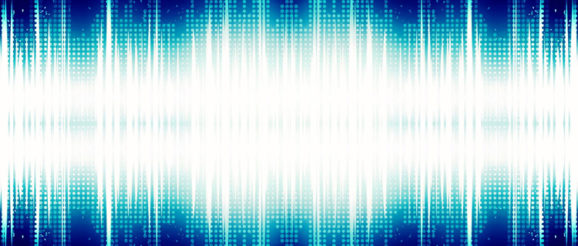A graphene innovation that’s music to the ears | Berkeley News

For lovers of high-fidelity audio, or for those who just want the coolest new thing, revolutionary, distortion-free earphones based on high-tech graphene will soon be coming your way, courtesy of basic research at UC Berkeley and Berkeley Lab.
The technology emerged a few years ago from the lab of Alex Zettl, a professor of physics and senior faculty scientist at Berkeley Lab. Playing with a popular new material, graphene — single-atom thick sheets of carbon — Zettl and former postdoc Qin Zhou sandwiched a few layers together to make a drumhead that turned out to be a nearly 100% efficient sound transducer: picking up sound as a microphone, and reproducing sound as a speaker. Most mics and speakers waste about 90% of the electrical energy driving them.
The technology was licensed in 2016 to GraphAudio, based in California, and is rapidly moving toward commercialization.
GraphAudio CEO Ramesh Ramchandani said that he expects the technology to be available to consumers within one or two years in earbud headphones and amplifiers, integrated into products made by established audio-product manufacturers. Eventually, these products could include speakers, microphones, autonomous vehicle sensors and ultrasonic and echolocation systems.
“We have been working on graphene-based materials and structures for a number of years now, and this transducer is one of the applications that came out of that,” Zettl said.
The sandwiched graphene transducer is almost distortion-free and has an extremely “flat” response across a very broad range of sound frequencies, well beyond what the human ear is capable of hearing. This means that the sound is of equal quality across a wide range of high and low frequencies – “not just in the audio band, but from subsonic all the way to ultrasonic,” he said. “This is pretty much unprecedented.”
Ramchandani of GraphAudio said that the sample headphones and microphones the company demoed at the Consumer Electronics Show in January resulted in productive discussions with prospective partners. The company claims the sound quality of its technology is so crystal-clear that it’s possible to pick out an individual instrument’s tones from a symphony orchestra.
Among the bleeding-edge products that could emerge from GraphAudio’s licensed technology are thin car speakers embedded in a vehicle’s interior ceiling for an improved surround-sound experience, and improved car sensors that rely on two-way echolocation to avoid vehicle collisions.
“To be able to work on things that have real applications and public benefits – it’s nice to see that full progression,” Zettl said. “I’m thrilled to be able to see these applications come out of this. For me that’s personally rewarding.”
